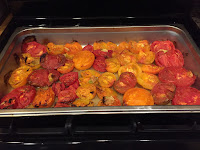As the garden quiets under the soft gray skies of November, it offers something that can be easy to overlook in the rush of planting and harvesting: time to reflect. Gardening connects us — not only to the soil beneath our feet, but also to the broader rhythm of community and care. When the growing slows, gratitude has space to grow.
Gratitude for the Living Soil
Beneath every patch of mulch and layer of fallen leaves, the soil is still very much alive. Even as the air cools, countless microbes, fungi, and invertebrates continue the slow work of breaking down organic matter and returning nutrients to the earth. Taking a moment to appreciate that unseen activity reminds us that rest and renewal are part of the same cycle.
A gardener’s gratitude can begin here: for healthy soil, for the worms and fungi that enrich it, and for the patience it teaches us every season.
Gratitude for Stewardship
Gardening teaches humility — we don’t control nature; we collaborate with it.
By planting with purpose, conserving water, or leaving seed heads for birds and beneficial insects, we practice gratitude through action. Even when the garden sleeps, these small choices continue to support life through winter.
Our gratitude deepens when we recognize that every act of care — composting, conserving, or simply noticing — sustains the living systems that sustain us.
Gratitude for Community
As the garden settles into its winter rest, many of us find ourselves with a little more time — time we once spent watering, weeding, or harvesting. November offers the chance to turn that energy outward, to nurture something beyond our own backyards.
Gratitude can take root in new places when we lend a hand in our communities. Local food banks, shelters, and meal programs need extra help during the colder months. Animal rescues, libraries, and senior centers often welcome volunteers, too. Even small acts — checking in on a neighbor, raking leaves for someone who can’t, or donating fresh produce or canned goods — remind us that the spirit of gardening is really about growing connection and care.
Just as we tend the soil to nourish life, volunteering tends the human side of our shared landscape. Every small kindness enriches the place we all call home.
Gratitude for the Seasons of Rest
It’s tempting to see November as an ending, but the garden’s dormancy is its own kind of beginning.
The leaves that fall become next year’s humus. The perennials that fade prepare their roots for renewal. And we, too, can slow down, take stock, and dream ahead — not with urgency, but with appreciation for all the quiet work that happens unseen.
Taking It Forward
As you plan for the next season, maybe start your list with thanks:
To the soil that fed your garden.
To the pollinators and wildlife who share our spaces.
To the neighbors and volunteers who strengthen our communities.
And to the cycle of growth, rest, and renewal that continues, year after year.
Gratitude, like compost, deepens the more you turn it.




















.png)
.png)











.png)